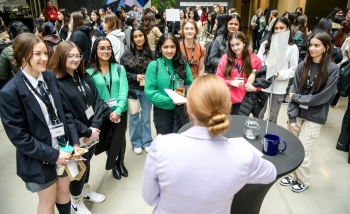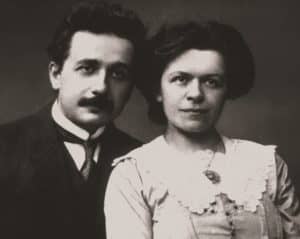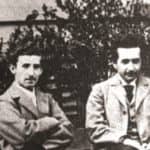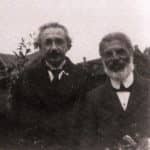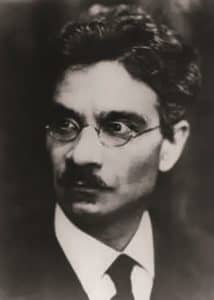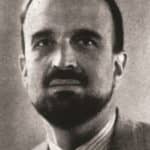There’s Einstein’s theory of general relativity, and then there’s the theory behind the theory. Two of them, actually. The most common is that Albert Einstein toiled alone until he presented his seminal paper on November 25, 1915. The other – which science historian Jürgen Renn says is more accurate – is that Einstein’s masterwork was created with a lot of help from friends and colleagues.
“Einstein was not alone. He was surrounded by friends who supported his rebellious anti-authoritarian attitude with regard to the establishment of physics,” says Renn, the director of the Max Planck Institute for the History of Science, who has spent years studying Einstein’s original papers.
Here are some of Einstein’s key collaborators from 1905 (when Einstein published his special theory of relativity) to 1915 (when he published his general theory):
Albert Einstein with first wife, and possible collaborator, Mileva Maric.[/caption]
Mileva Marić: As classmates at university, Marić and Einstein developed an intense intellectual and romantic connection. They had a daughter (who either died or was given up for adoption), then married and had two sons. There is much debate over Marić’s contribution to Einstein’s early work, in particular special relativity. Most historians consider her a sounding board for Einstein, but a few academics posit she was closer to a co-author. The pair separated in 1914 – two years after Einstein became reacquainted with his cousin Elsa Löwenthal – and divorced in 1919. (Einstein and Löwenthal married later in 1919.)
Marcel Grossmann and Albert Einstein.[/caption]
Marcel Grossmann: A former classmate upon whose lecture notes Einstein relied to pass university, Grossmann’s father helped Einstein get a job as an assistant examiner in the Bern patent office after graduation. A specialist in descriptive geometry, Grossmann assisted with the math to create the field equations for general relativity, emphasizing the importance of Riemannian geometry and introducing Einstein to absolute differential calculus. Together, Einstein and Grossmann devised the “Entwurf” (draft) theory, a stepping stone between special and general relativity. In Einstein’s notebooks, “you always see, in the crucial moments, Grossmann’s name,” says Renn.
Albert Einstein with friend Michele Besso.[/caption]
Michele Besso: An engineer and patent clerk, “he was perhaps Einstein’s most important interlocutor, not only during the time when he created general relativity, but through the rest of his life,” Renn says. The pair constantly exchanged letters about everything, with Einstein using his friend as a sounding board for his latest ideas. Besso is credited with introducing Einstein to the works of Ernst Mach, whose thought experiments were central to Einstein’s development of the equivalence principle.
Astronomer Erwin Finlay- Freundlich.[/caption]
Erwin Finlay-Freundlich: The first astronomer to take Einstein’s ideas seriously, Finlay-Freundlich worked at the Berlin Observatory, and was asked by Einstein in 1911 to make accurate observations of Mercury’s orbit in order to confirm the general theory of relativity. Finlay-Freundlich’s results were published in 1913 – against the recommendation of the Observatory Director. Einstein said Finlay-Freundlich was “the first among fellow-scientists who has taken pains to put the theory to the test.” Finlay-Freundlich published a book in 1916 discussing ways to test general relativity with astronomical observations, and later became the chief observer at the Einstein Institute.
Einstein's assistant Adriaan Fokker.[/caption]
Adriaan Fokker: A Dutch physicist who worked as Einstein’s assistant for the 1913-14 semester, Fokker co-authored a paper that contains Einstein’s first treatment of a gravitation theory in which general covariance is strictly obeyed.
Paul Bernays: A mathematician and former classmate of Einstein and Grossmann, in 1914, Bernays advised the pair to use variational calculus in the formulation of the relativity theory.
David Hilbert: A mathematical genius at the University of Göttingen, Hilbert was introduced to the ideas of general relativity when Einstein visited in the summer of 1915. Taken with the theory, Hilbert emerged as a chief rival in completing it. The two exchanged letters as they raced to formulate the mathematical equations to support general relativity. Their rivalry peaked that November, during a series of lectures Einstein was presenting to the Prussian Academy. On November 15, Einstein’s revised equations correctly predicted Mercury’s perihelion drift; three days later, he received a letter from Hilbert revealing very similar work. On November 25, Einstein presented his completed final set of equations to the Academy. He had won the race, and the pair was soon making amends. Hilbert later noted, “Einstein did the work and not the mathematicians.”
None of this diminishes Einstein’s genius, Renn says. In fact, it helps underscore his brilliance, as he drew on and transmuted the knowledge accumulating in various branches of classical physics: “Einstein was a convergence thinker. He brought different traditions together.”
With thanks to the Albert Einstein Archives, The Hebrew University of Jerusalem, for images used in this issue of Inside the Perimeter.
About PI
Perimeter Institute is the world’s largest research hub devoted to theoretical physics. The independent Institute was founded in 1999 to foster breakthroughs in the fundamental understanding of our universe, from the smallest particles to the entire cosmos. Research at Perimeter is motivated by the understanding that fundamental science advances human knowledge and catalyzes innovation, and that today’s theoretical physics is tomorrow’s technology. Located in the Region of Waterloo, the not-for-profit Institute is a unique public-private endeavour, including the Governments of Ontario and Canada, that enables cutting-edge research, trains the next generation of scientific pioneers, and shares the power of physics through award-winning educational outreach and public engagement.
You might be interested in


